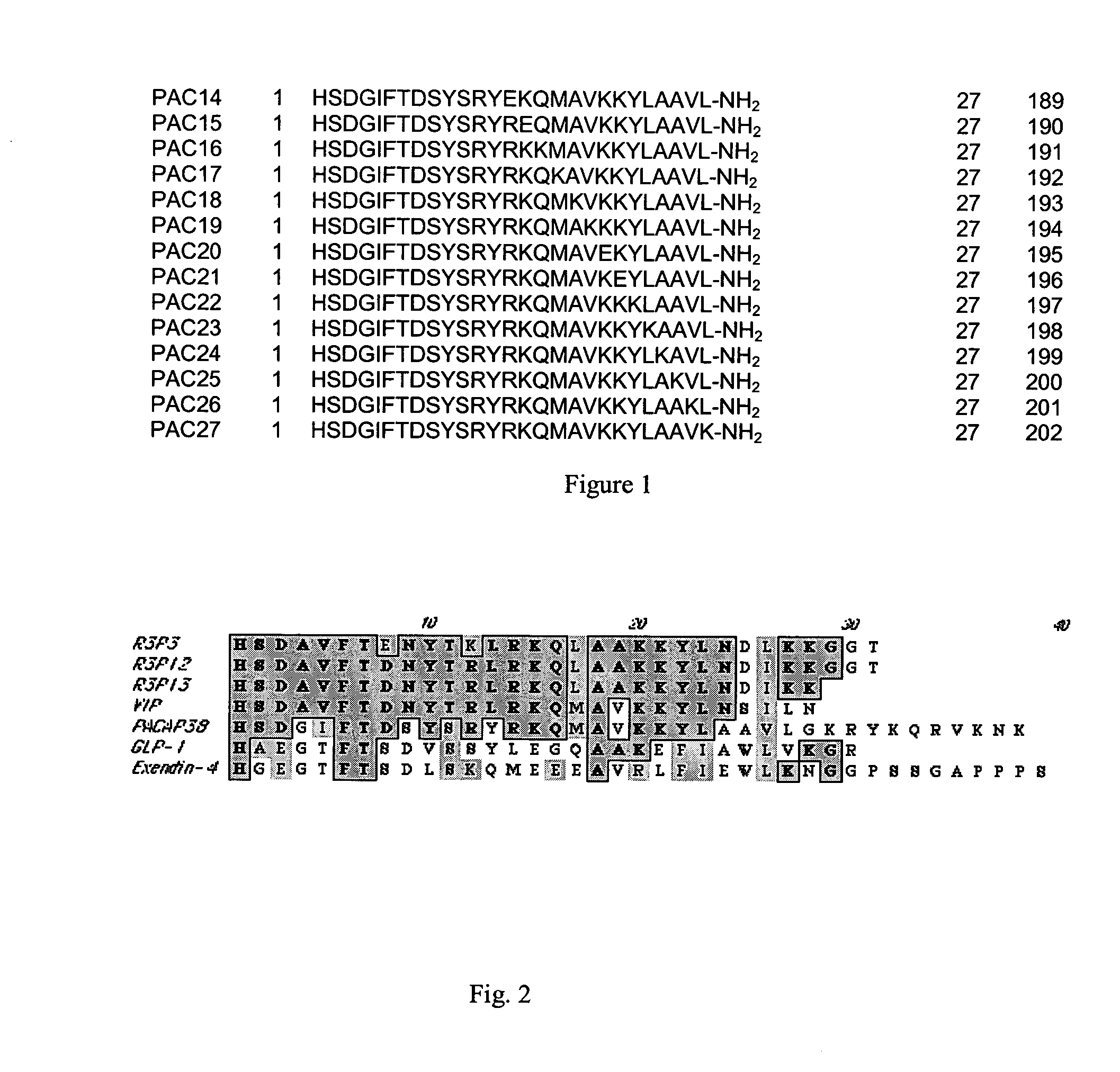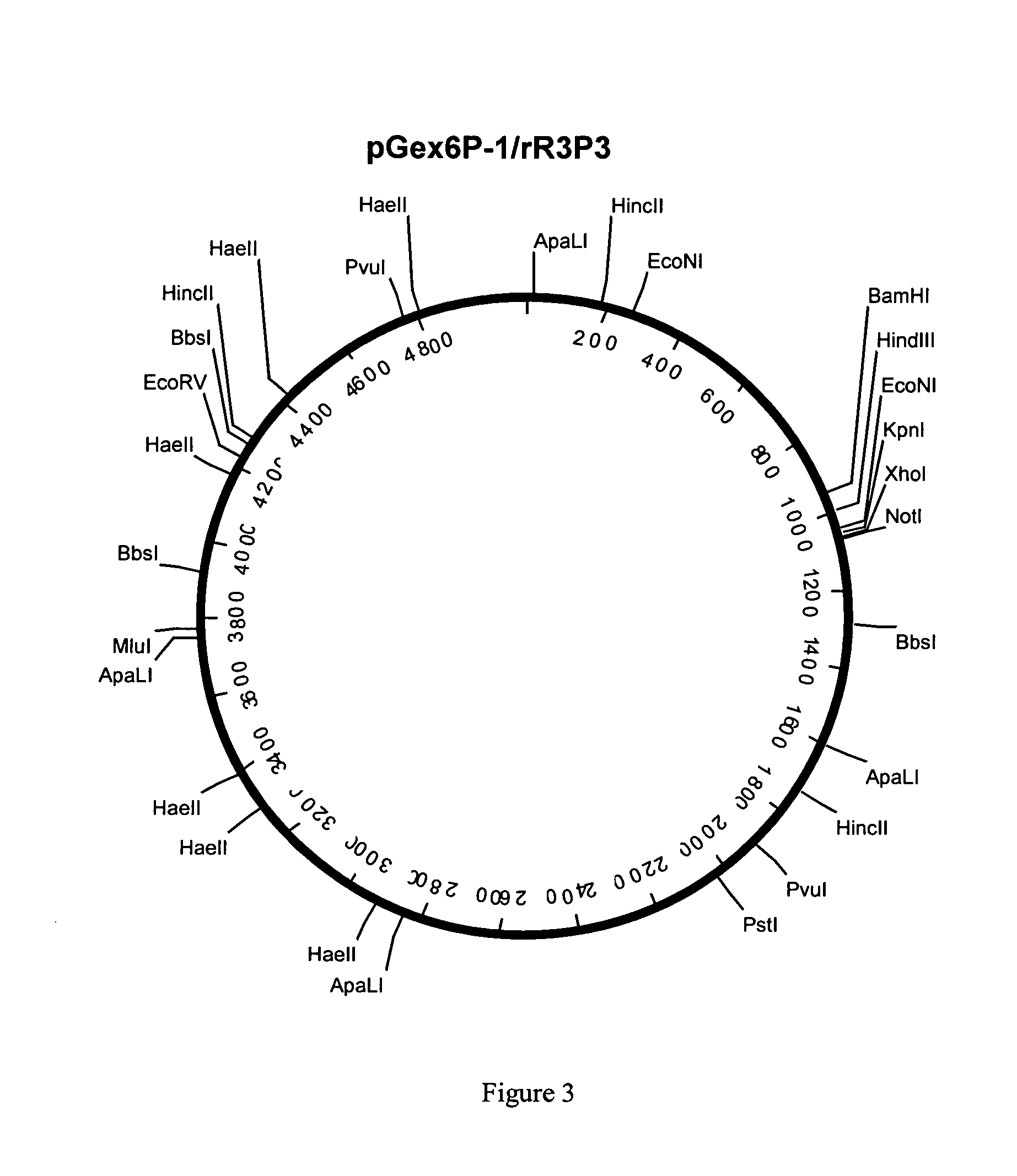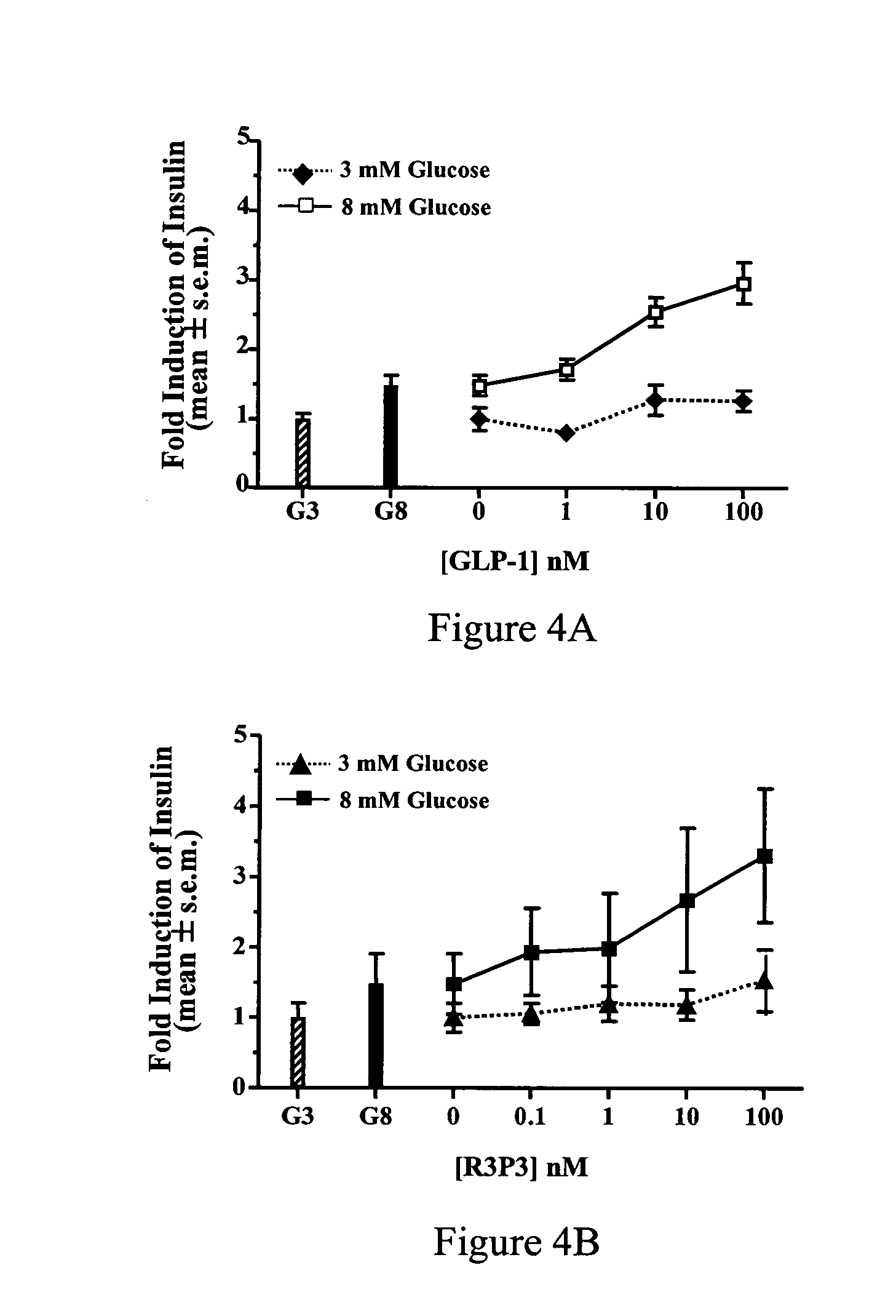Pituitary adenylate cyclase activating peptide (PACAP) receptor 3 (R3) agonists and their pharmacological methods of use
a technology of adenylate cyclase and adenylate cyclase, which is applied in the direction of peptide/protein ingredients, extracellular fluid disorder, metabolic disorders, etc., can solve the problems of gastrointestinal side effects reported in the literature, drug association with liver toxicity, and limitations of sfus
- Summary
- Abstract
- Description
- Claims
- Application Information
AI Technical Summary
Benefits of technology
Problems solved by technology
Method used
Image
Examples
example 2
Protocol for Assaying Peptide-Induced Elevation of Insulin Levels in Rats
[0113] Wistar rats are fasted overnight (17 hrs) and then anesthetized with pentobarbital (0.1 ml / 100 g BW). Glucose (0.4 g / kg dissolved in 1% human albumin-saline) .+-.peptide (dissolved in 1% human albumin-saline) is injected intravenously into the tail vein. The rats are eye-bled 1 minute after the injection and 50-100 ul of the plasma are assayed for insulin level with the Linco RIA kit (Linco Research, Inc., St. Charles, Mo.).
example 3
Protocol for Determining the Effect of Peptides on Intraperitoneal Glucose Tolerance in Rats
[0114] Wistar rats are fasted overnight and then anesthetized with pentobarbital. The rats were eye-bled (zero time) and the peptide (in 1% human albumin) was injected into the tail vein. Five minutes later, 1 g / kg of glucose (in saline) was injected intraperitoneally, and the rats were eye-bled after 15, 30 and 60 minutes. Plasma glucose levels were determined using the Technicon Axon autoanalyzer, Bayer Diagnosics division of Bayer Corporation, Tarrytown N.Y., operated using Method No. SM4-2143F90 "Glucose".
example 4
Protocol for Determining the Effect of Peotides on Intestinal Water Retention in Rats
[0115] Male rats were fasted for 24 hours, and their water bottles were taken away for 2-3 hours before the start of the experiment. Peptide or saline was injected subcutaneously into conscious rats. The rats were euthanized with CO.sub.2 10 minutes after dosing, and the small intestine dissected out and weighed (1). The intestine was cut open, the water in the lumen absorbed with filter paper, and the intestine re-weighed (2). The amount of intestinal water (g)=weight (1)-weight (2).
PUM
| Property | Measurement | Unit |
|---|---|---|
| RI | aaaaa | aaaaa |
| pH | aaaaa | aaaaa |
| body weight | aaaaa | aaaaa |
Abstract
Description
Claims
Application Information
 Login to View More
Login to View More - R&D
- Intellectual Property
- Life Sciences
- Materials
- Tech Scout
- Unparalleled Data Quality
- Higher Quality Content
- 60% Fewer Hallucinations
Browse by: Latest US Patents, China's latest patents, Technical Efficacy Thesaurus, Application Domain, Technology Topic, Popular Technical Reports.
© 2025 PatSnap. All rights reserved.Legal|Privacy policy|Modern Slavery Act Transparency Statement|Sitemap|About US| Contact US: help@patsnap.com



